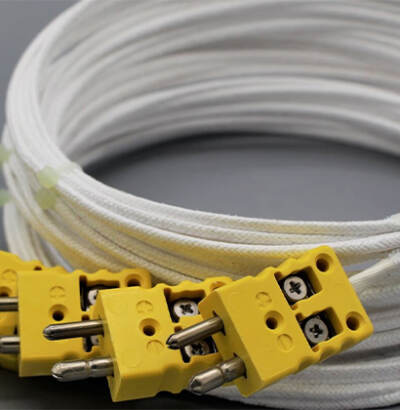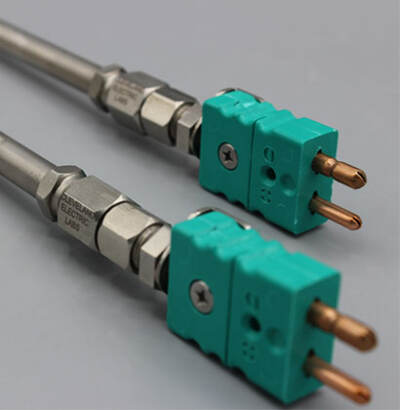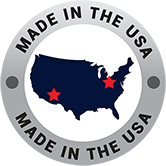What Is the Difference Between J and K Type Thermocouples?
Understanding what is the difference between J and K type thermocouples is essential when selecting the right temperature sensor for industrial applications. Each type offers specific advantages for accuracy, durability, and temperature range. At Cleveland Electric Laboratories, we’ve spent over a century crafting high-precision thermocouples, supporting engineers in aerospace, power generation, and manufacturing to achieve precise and reliable temperature control.
Understanding J and K Type Thermocouples
Both J type thermocouples and K type thermocouples operate on the Seebeck effect, where two dissimilar metals joined at a junction generate a voltage proportional to temperature changes. However, their material composition creates distinct performance characteristics.
J Type Thermocouples: Iron-Constantan
Composition and Range
J type thermocouples consist of iron (positive) and constantan (copper-nickel alloy) wires, identified by white and red wire colors. They operate effectively from 0°C to 750°C (32°F to 1,382°F).
Key Specifications
- Standard accuracy: ±2.2°C (±4°F) or ±0.75%
- Special Limits of Error: ±1.1°C (±2°F) or ±0.4%
- Sensitivity: ~55 microvolts per degree Celsius
Advantages
- Cost-effective for moderate temperatures
- Fast response time due to iron’s thermal conductivity
- High sensitivity with strong signal output
- Excellent stability in reducing atmospheres
Common Applications
- Plastic injection molding and extrusion
- Food processing equipment
- General industrial heating below 750°C
- Vacuum processing applications
K Type Thermocouples: Chromel-Alumel
Composition and Range
K type thermocouples use chromel (nickel-chromium) and alumel (nickel-aluminum-silicon) alloys, identified by red and yellow wire colors. They offer the widest temperature range: -270°C to 1,260°C (-454°F to 2,300°F).
Key Specifications
- Standard accuracy: ±2.5°C (±4.5°F) or ±0.75%
- Special Limits of Error: ±1.1°C (±2°F) or ±0.4%
- Sensitivity: ~41 microvolts per degree Celsius
Advantages
- Widest temperature range among common types
- Excellent oxidation resistance up to 1,000°C
- Good corrosion resistance
- Cost-effective for high-temperature applications
Common Applications
- Gas turbine engine monitoring
- Steel and metal processing
- Industrial furnaces above 750°C
- Chemical processing and petroleum refining
- Nuclear and aerospace applications


Direct Comparison: J vs K Type
| Specification | J Type | K Type |
|---|---|---|
| Temperature Range | 0°C to 750°C | -270°C to 1,260°C |
| Wire Colors | White (+), Red (-) | Yellow (+), Red (-) |
| Accuracy | ±2.2°C or ±0.75% | ±2.5°C or ±0.75% |
| Sensitivity | ~55 μV/°C | ~41 μV/°C |
| Cost | Lower | Moderate |
| Response Time | Faster | Good |
| High-Temp Stability | Poor above 750°C | Excellent |
Are J and K Type Thermocouples Interchangeable?
No, J and K type thermocouples are not directly interchangeable due to fundamental differences in their voltage output characteristics.
Why They’re Not Interchangeable
- Different voltage outputs: J type produces ~55 μV/°C while K type generates ~41 μV/°C
- Unique temperature coefficients: Each type has distinct voltage-to-temperature relationships
- Controller calibration: Temperature systems require specific algorithms for each thermocouple type
When Conversion Is Possible
Conversion between types can be achieved through:
- Controller reprogramming to accept different thermocouple types
- Signal conditioning modifications for different voltage outputs
- Complete system recalibration using NIST-traceable standards
How to Choose Between J and K Type
Choose J Type When:
- Operating temperatures stay below 750°C
- Fast response time is critical
- Budget constraints favor lower costs
- Working in reducing or inert atmospheres
Choose K Type When:
- Temperature range exceeds 750°C
- Operating in oxidizing atmospheres
- Wide temperature capability is required
- Working in corrosive environments
Application-Specific Recommendations
- Aerospace & Gas Turbines: K type for extreme temperatures and oxidizing environments
- Plastic Processing: J type for moderate temperatures and fast response
- Steel Processing: K type for high-temperature capability General Industrial: J type below 750°C, K type above 750°C
Common Issues and Troubleshooting
J Type Issues
- Iron oxidation at elevated temperatures
- Magnetic interference in some applications
- Limited high-temperature capability
K Type Issues
- Green rot in certain atmospheric conditions
- Drift at high temperatures due to chromium migration
- Lower sensitivity compared to J type



